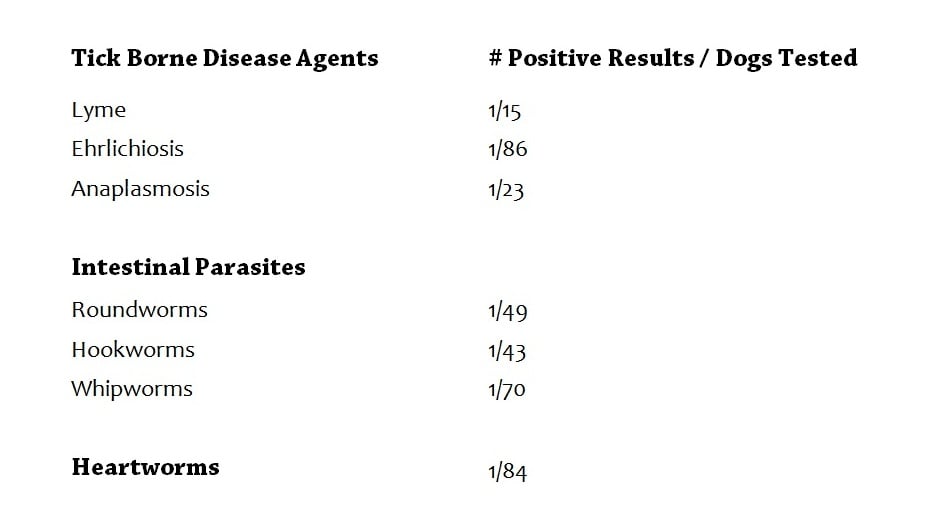Questions About Heartworms in Dogs and Cats
Several people wanted more information about the regional prevalence of heartworms and other parasites. I don’t have the space to address that directly here, but I can point you toward an excellent resource – the Parasite Prevalence Maps that have been put together by the Companion Animal Parasite Council (CAPC).
When you go to the site, you can navigate your way to multiple categories: tick borne disease agents including Lyme disease, ehrlichiosis, and anaplasmosis; intestinal parasites including roundworms, hookworms and whipworms; and heartworms. CAPC provides maps for both dogs and cats, but unfortunately the feline data is a little sparse at this point.
On each map, you can narrow your focus to individual states and even down to the county level; it’s pretty cool. Keep in mind that the raw numbers do NOT represent the total number of positive cases in the area, only the number of positive tests reported to CAPC by three organizations: IDEXX Laboratories, ANTECH Diagnostics, and Banfield Pet Hospitals. CAPC estimates that the data represents less than 30% of the number of positive cases in each geographic region. That said, the information provided is a good representation of the parasite activity in the area.
On the national level, the CAPC maps for dogs reveal:
As I said, the data for cats is not complete, but CAPC does report that one out of twenty cats tested for roundworms was positive.
Other reader questions to the heartworm posts included:
Are there any dangers associated with changing the type of preventative utilized? Can there be any danger of residual medication from the previous dose mixing with a different brand?
No, it is perfectly safe to switch from one brand of heartworm prevention to another. Give the first dose of the new product when you would have given the next scheduled dose of the old.
What about older, sick, immune-compromised (etc.)cats?
This would have to be dealt with on a case-by-case basis with regards to the illness involved, its severity, and the risk that a cat could contract heartworms.
"The biggest problem we have today is still the number of dogs and cats that are not on prevention or are not on 12 doses all year round. Talk to your veterinarian about what the best product is for your pet. That will depend on a series of factors, including the spectrum of the product."
If HW is transmitted mostly from infected mosquitoes that get the disease from wildlife and farm animals and it is not as prevalent in the companion canine population, how does this comment hold any water?
I’m not sure I understand this question. A large reservoir of heartworm positive dogs, coyotes, fox, etc. exists from which mosquitoes can pick up infective heartworm larvae and transmit them to pets. I think Dr. von Simson’s point was that at the population level, our biggest problem is still the number of pets that do not receive adequate heartworm prevention and not drug resistance in the parasites themselves.
My question, what is the lifespan of the heartworm?
Five to seven years when a dog does not receive treatment is typical. With regards to the "slow kill" method you referenced, I can’t do better than the reply offered by descendingdaphne:
Straight from the American Heartworm Association's treatment guidelines:
Slow-kill methods using continuous monthly administration of prophylactic doses of any macrocyclic lactone are NOT RECOMMENDED. While effective in reducing the life span of juvenile and adult heartworms, it appears that the older the worms are when first exposed to macrocyclic lactones, the longer it takes for them to die. The adulticidal effect of macrocyclic lactones may take more than two years of continuous administration before adult heartworms are eliminated completely, and rigid exercise restriction would still be required for the entire treatment period. Throughout this period, the infection would persist and pathology would continue to worsen. Another potential concern in using macrocyclic lactones long-term in heartworm positive dogs as stand-alone therapy is the potential for selection of resistant sub-populations of heartworms.

Dr. Jennifer Coates
Image: Eric Isselée / via Shutterstock

